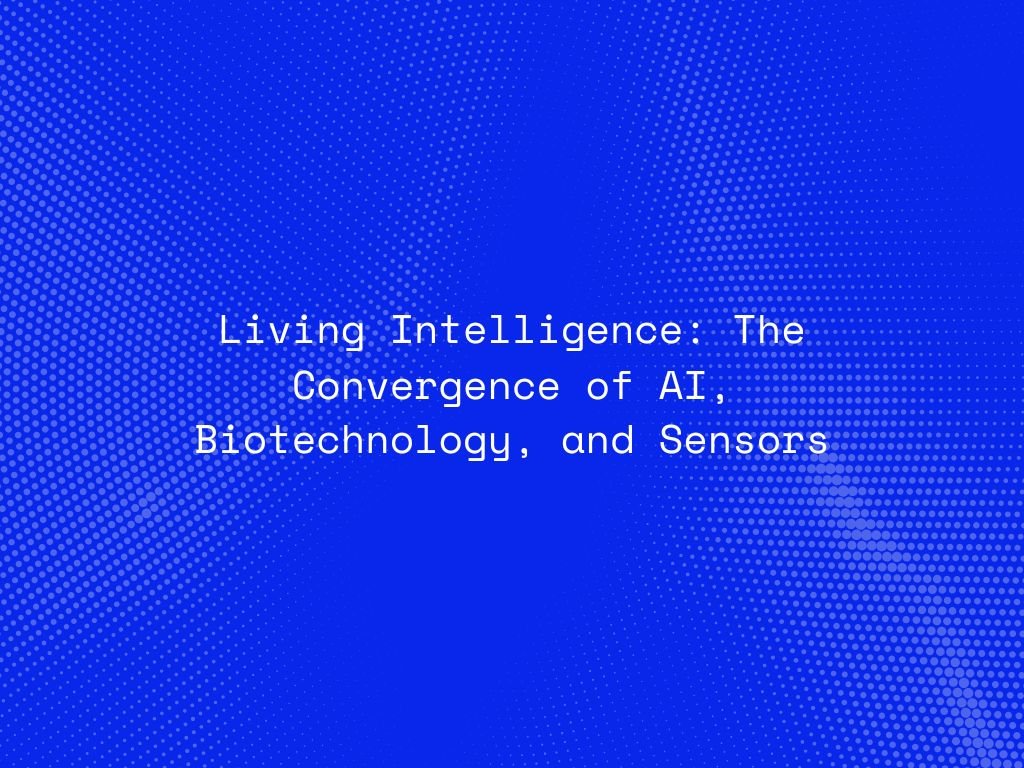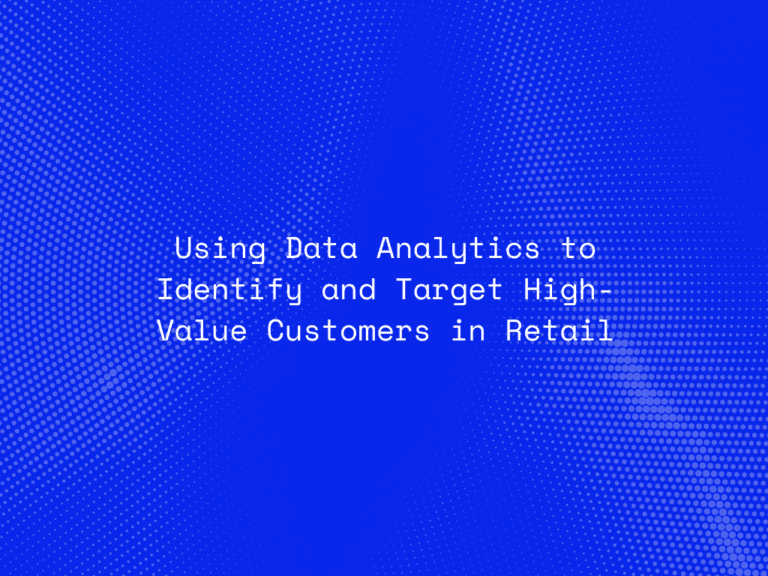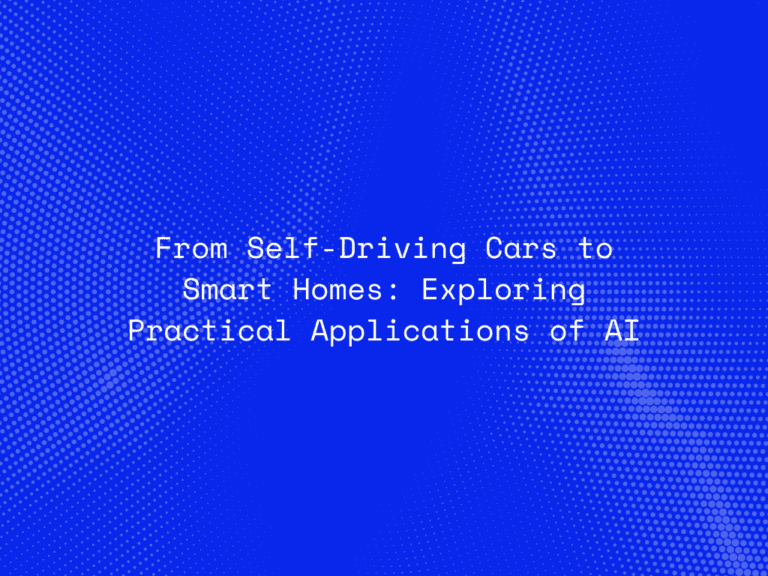In the 21st century, the boundary between biology and technology is rapidly dissolving. The convergence of artificial intelligence (AI), biotechnology, and advanced sensor systems is ushering in a new era—one where machines not only process data but also interact with living organisms in intelligent, adaptive ways.
This fusion—often referred to as “living intelligence”—has far-reaching implications, from personalized medicine and brain-computer interfaces to precision agriculture and environmental monitoring. It’s not just about smart machines; it’s about intelligent ecosystems that are biologically aware, continuously learning, and capable of influencing and improving life itself.
What Is Living Intelligence?
Living intelligence refers to the integration of computational intelligence with biological systems, enhanced through real-time sensory feedback and adaptive machine learning models. These systems use:
-
AI for decision-making and pattern recognition
-
Biotech for understanding and interfacing with biological processes
-
Sensors for collecting real-time data from physical and biological environments
Together, they create dynamic feedback loops between biological systems and digital intelligence, allowing machines to understand, interpret, and interact with life at molecular, cellular, and behavioral levels.
The Core Technologies Behind the Convergence
1. Artificial Intelligence & Machine Learning
AI algorithms, especially in deep learning and neural networks, analyze vast amounts of biological data—from genomics to medical imaging—enabling predictive modeling, diagnosis, and autonomous adaptation.
2. Biotechnology
From CRISPR to synthetic biology, biotech enables programmable biology. It allows the modification of DNA, proteins, and even entire organisms in controlled ways—opening doors for intelligent, responsive therapies and biologically-augmented systems.
3. Advanced Sensors
Modern biosensors, nano-sensors, and wearables gather continuous, high-resolution data on everything from blood chemistry to environmental toxins. These sensors serve as the “eyes and ears” of AI systems, feeding them with real-world biological inputs.
Applications of Living Intelligence
1. Personalized and Predictive Healthcare
Smart wearables now go far beyond counting steps. With embedded biosensors and AI integration, they can:
-
Monitor glucose levels in diabetics
-
Detect early signs of heart failure
-
Alert users to abnormal biomarkers in real time
AI models trained on personalized health data can predict disease risks, optimize medication dosages, and even recommend lifestyle interventions tailored to genetic predispositions.
2. Brain-Computer Interfaces (BCIs)
BCIs like Neuralink are pioneering direct communication between the brain and machines. These systems use EEG sensors and AI to:
-
Restore mobility to paralyzed patients
-
Enable hands-free computing for disabled users
-
Facilitate cognitive enhancement through feedback loops
The convergence of AI and neural biosignals opens avenues for conscious-machine collaboration.
3. Precision Agriculture
Sensor-embedded drones and AI models analyze crop health, soil quality, and weather patterns. Meanwhile, bio-sensors in plants can detect stress signals, pests, or nutrient deficiencies. This enables:
-
Targeted irrigation and fertilization
-
Early disease detection
-
Reduction in pesticide usage
Living intelligence ensures agriculture becomes more sustainable, productive, and resilient.
4. Environmental Monitoring and Conservation
Deployable bio-sensing systems in oceans, forests, and urban areas gather real-time data on:
-
Pollution levels
-
Wildlife behavior
-
Climate changes
Combined with AI, these systems can model ecosystems, predict disasters, and inform conservation strategies—all while minimizing human intervention.
5. Smart Prosthetics and Bio-Integrated Robotics
Advanced prosthetics now incorporate AI to adapt to movement patterns. With embedded sensors, they:
-
Detect muscle signals
-
Adjust grip or gait based on terrain
-
Learn user habits over time
These bio-integrated systems not only restore function but enhance it, creating cyborg-like fusions of human and machine.

Benefits of Living Intelligence
-
Hyper-Personalization: Systems adapt to individual biology in real time.
-
Preventive Interventions: Predictive models spot anomalies before symptoms arise.
-
Real-Time Responsiveness: Systems react instantly to changing biological signals.
-
Enhanced Human Performance: From brain stimulation to wearable robotics, humans are augmented intelligently.
-
Sustainable Innovation: Bio-aware systems optimize resource usage across medicine, farming, and energy.
Challenges and Ethical Considerations
1. Data Privacy and Consent
Real-time biological data—like heart rate, DNA, and brainwaves—is highly personal. Without strong safeguards, these systems could be exploited.
2. Bioethics and AI Autonomy
Who controls systems that can alter genes or influence brain signals? There’s a need for robust ethical frameworks to prevent misuse.
3. System Complexity and Reliability
Integrating biological signals with AI is technically complex. Ensuring these systems are safe, explainable, and fail-safe is critical.
4. Access and Equity
Advanced living intelligence solutions must be designed with accessibility and global equity in mind to avoid exacerbating health or economic divides.
The Road Ahead
As convergence accelerates, we can expect:
-
Closed-loop bio-AI systems that treat conditions automatically (e.g., insulin pumps responding to glucose sensors)
-
Intelligent bio-simulations for drug discovery and disease modeling
-
Neuro-adaptive interfaces that shape digital content based on brain activity
-
AI-designed life forms in synthetic biology and drug delivery
In short, the line between biological and digital intelligence will continue to blur—ushering in an era where life and machine grow symbiotically.
Conclusion
The convergence of AI, biotechnology, and sensors is creating a new class of systems that are not just smart but biologically aware. These living intelligence ecosystems promise to reshape healthcare, agriculture, sustainability, and human-machine interaction.
While challenges remain, the potential to heal, enhance, and harmonize with life marks this convergence as one of the most transformative frontiers in technology today.




